"Gegen Ende meiner Silberschmied-Ausbildung hatte ich begonnen, mich mit Lichtproblemen zu befassen", recalled the Swiss architect, designer and artist Max Bill in 1979, 'towards the end of my silversmith training I started to concern myself with problems of lighting', continuing, 'when I arrived at Bauhaus in the spring of 1927 I was impressed by the variety of Lichtträgern [light bearers] that alternated throughout the building according to functional needs'.
In particular Bill's attention was caught by one Lichtträger, 'a spherical pendant lamp in the seminar rooms. Here, it seemed to me, various problems were posed with exemplary clarity, and thus the typical shape for a specific purpose found.', and a Lichtträger that for Bill represented 'an early and classic example of the chain of considerations that can lead to problem solutions or point the way to analysis'.1
The Lichtträger in question is and was the so-called ME 94 by Marianne Brandt: a lamp designed and developed by Brandt at Bauhaus Dessau in the 1920s, employed in various contexts at Bauhaus Dessau in the 1920s and which in the 2020s served as the starting point for the participants of Stiftung Bauhaus Dessau's Bauhaus Lab to deliberate on, and respond to — as the starting point for a 'chain of considerations' on — subjects relating to electric lighting both historic contemporary and more contemporary contemporary.
The results of their deliberations and responses can be explored, and deliberated on and responded to, in the exhibition After modern brightness. Ecologies of light at Stiftung Bauhaus Dessau.......
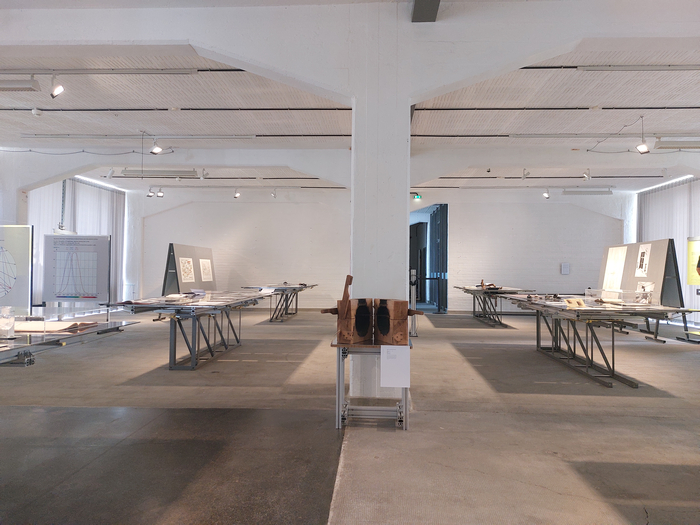
Inaugurated by Stiftung Bauhaus Dessau in 2013, the Bauhaus Lab is an annual institution which brings together a select/selected group of international creatives of various hues to engage with an annual theme starting with and from an historical object: to engage functionally, academically, and collectively, with that theme/object, and also abstractly, artistically, and individually, with that theme/object. And to subsequently present the results in a self-conceived exhibition.
Following on from Doors of Learning: Microcosms of a Future South Africa in 2022, Concrete Antarctic: Enacting Non-Humans in 2023 and On behalf of the environment. Pedagogies of unrest in 2024, the theme of the 2025 Bauhaus Lab was After modern brightness. Ecologies of light.
A theme approached in the exhibition After modern brightness. Ecologies of light in the Bauhausgebäude Dessau that opens, as the deliberations of the 2025 Bauhaus Lab alumni did, with Marianne Brandt's ME 94, a work realised in the Bauhaus Dessau Metal Workshop in 1926, thus not long before Max Bill arrived in Dessau.
An opening that explains the sober, technical details of the ME 94, including making note of, for example, the aluminium tube employed in the shaft via which it hangs from the ceiling, a material that, as the Bauhaus Laboratorians note, is lighter and less heat conductive than iron tubes and steel tubes, the latter that material which at that time of the ME 94's development a Marcel Breuer was so intensely experimenting with at Bauhaus Dessau, and an aluminium that, as we all recall from Into the Deep. Mines of the Future at the Zeppelin Museum, Friedrichshafen, was very much à la mode in the early 20th century; the ventilation vents to allow heat to escape from the otherwise closed glass sphere in which the light bulb was enveloped, an important aspect in context of the new-fangled incandescent light bulbs of the period that, as we know but then didn't, only covert 5% of the supplied power to light, the rest becoming heat; or the electric cables that confirm Brandt's ME 94 as a Lichtträger designed for the brave new universally electrified world of the 1920s.
But for all makes note of the ME 94's shade in its mix of opal and matt glass; two different glass types individually produced as half-spheres and unified as one shade. A, at that time, thoroughly novel, borderline revolutionary, combination of glass in an industrial process that not only enabled the directly upward flowing light from the bulb to be reflected from the white painted ceiling as dazzle-free, non-glaring light into the room, but also enabled the downwards and sideways flowing light to be both reflected upwards from the opal inner surface, thereby intensifying the agency of the reflected upward flowing light, and also to pass through the opal glass as a diffuse, more atmospheric, glare-free, light.
A protection from dazzle and glare while providing a clear, bright, functional light that, and as is often forgotten, is and was one of the novel conditions that the Functionalist Modernists had to contend with on account of the new-fangled electric incandescent light bulbs of the period. A protection from glare and dazzle while being actively technically functional that was why a Poul Henningsen began the 5 years of research in the early 1920s that led to his famed 3 shade solution; Marianne Brandt approached the problem, simultaneously, with a half opal glass shade.
And an atmospheric component on account of the opal glass that one rarely associates with the, allegedly, so cold and emotionless 1920s Functionalist Modernists with their steel tubes, white walls and quadrats.
Thus a sober, technical description of the ME 94 that not only introduces you to a lamp design you are probably unfamiliar with, nor ony tends to confirm a Charles Eames' contention that the details are not the details but the design2, but that also allows one to approach the ME 94 in context of Max Bill's opinion that it was a work in which 'various problems were posed with exemplary clarity' and an 'example of the chain of considerations that can lead to problem solutions or point the way to analysis'.
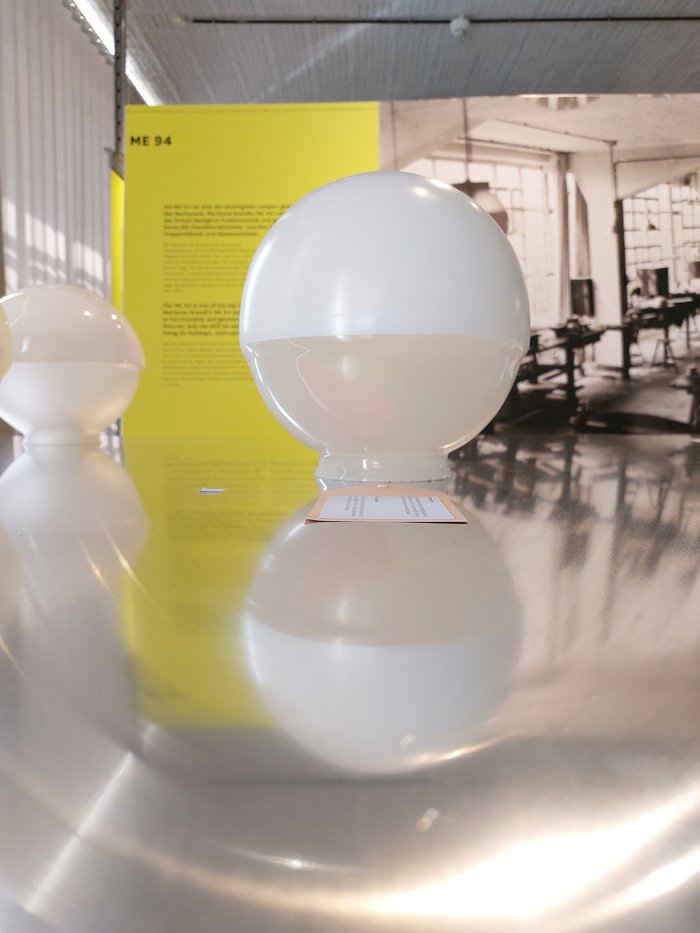
An opening chapter that also explains where the ME 94 was used in Bauhaus Dessau including via a large format photo of the Metal Workshop richly populated with a variety of lamps including numerous prominent ME 94s. And also richly populated, one notes, with Rowac-Schemels.
A metal workshop, in contrast, unpopulated by Bauhäusler, save one solitary Bauhäusler, standing self-confidently, self-evidently, at a truly fearsome looking sheet metal cutter; a solitary Bauhäusler that we very much assume is Marianne Brandt. And that if it is Brandt is a powerful underscoring of Brandt's prowess in a Metal Workshop, of Marianne Brandt owning a Dessau Metal Workshop, the practised gender segregation at the Bauhauses technically denied her access to. And would have denied her access to, had it not been for the foresight of László Moholy-Nagy. A gender segregation, and a what would have become of Marianne Brandt had she not had access to the Metal Workshop, and the associated what could have become of all those other female Bauhäusler who did find themselves against their will in the Weimar and Dessau Weaving Workshops, well worth reflecting on as you view After modern brightness. The question of the brightness of the Bauhauses in terms of gender parity.
And a Bauhaus Dessau Metal Workshop in which you currently stand.
Albeit, sadly without the ME 94s you can enjoy in the photo. A photo which tends to reinforce what you are missing. And tends to echo the question of how 'authentic' is the contemporary Bauhaus Dessau atelier building stimulated and advanced by Mehr als echt (More than real) by Jun Yang that can be interacted with throughout the atelier building.
The absence of ME 94's is however not critical, as the ME 94 is and was but the starting point of the 2025 Bauhaus Lab.
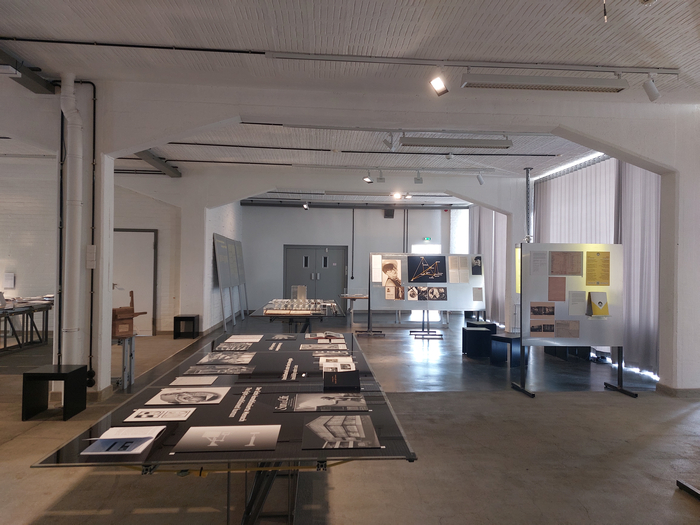
A starting point from which After modern brightness moves off from in varied and various directions; a non-linear movement tending to be echoed in an exhibition layout that criss-crosses the former Metal Workshop. A criss-crossing exhibition layout that while we understand why it has been arranged as it is, and agree with the decisions made, does tend to mean that most visitors ignore the curators intentions and follow the presentation clockwise round the space. A fact which no more detracts from the presentation than the lack of ME 94s hanging from the ceiling, is but a point we felt a needed to make in context of the functions and intentions of the Bauhaus Lab. But which, yes, you're right, we probably didn't need to make.
A presentation that, if followed as the curators intended, a course we'll not exactly follow but will follow very closely, that opens with a brief discussion on experimentation at the Bauhauses, that key component of what that Bauhauses were in the 1920s and 30s before they became an unchanging, safe, style everyone can describe and untold opportunists copy (although it doesn't exist); a brief discussion primarily focussed on those experimentations associated with light undertaken at Bauhaus Dessau, be that in context of lighting design, fine art, the illumination and transparency of Gropius' school building with its glass curtain wall facade. Or in context of the novel arts of film and photography, the latter including the photograms of a Moholy-Nagy (and a Lucia Moholy) that also feature in Bauhaus Ecologies at the Bauhaus Museum, Dessau, where they very neatly link Bauhaus to the Loheland school/community near Fulda, before leaving Bauhaus per se and moving on to the key role electric lighting played in enabling, empowering, the novel urban landscapes of the 1920s.
A role, as previously discussed by and from Small Apartment, Department Store, Power Station – New Building and New Living in 1920’s Halle at the Stadtmuseum Halle in which the illuminating of shops, including the all-important display windows, of the brave new consumer world of the 1920s was of paramount importance; shop window lighting that, if one so will, can be considered, on account of its relevance for the brave new consumer world of the 1920s, the Search Engine Optimisation of the 1920s. That method of ensuring your products are displayed in such a way that they not only attract but excited the consumer’s eye. Something tending to be underscored by the presence in After modern brightness of pages from the 1926 publication Die Technik der Schaufenster-Beleuchtung, Techniques of Shop Window Lighting, one of a series of shop window lighting works published in the 1920s by the light bulb manufacturer Osram.
An Osram to whom we shall return very shortly.
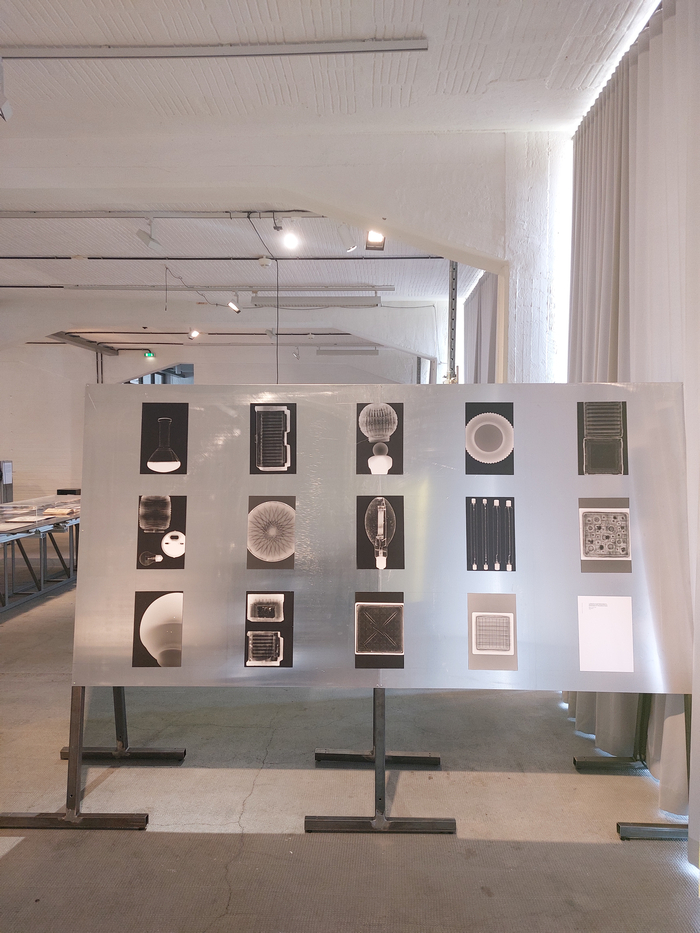
As Small Apartment, Department Store, Power Station's title tends to imply, aside from the brave new consumer world of the 1920s another important dominion of change was the new forms of urban accommodation being developed in the 1920s; new forms of urban accommodation being developed by, amongst others, the myriad architects associated with the Bauhauses, and of which an important aspect was the possibilities offered by the novel electric lighting associated with the novel electrification of society.
A novel lighting of novel domestic housing discussed in After modern brightness in context of, for example, a selection of Bakelite light switches, a reminder of the fundamental importance of that novel material to the developments of the period and thus by extrapolation the key role novel materials play in all developments of societies; the Osram Vitalux-U, a light bulb that promised to bring the sunlight into the home, a claim that also indicates while associations between electric light and health have long been made, they've often been very wrong in the conclusions they drew and solutions the offered; or pages from the 1927 Osram book/brochure Hausfrau und Heimbeleuchtung, Housewife and Home Lighting, that points out that whereas 'until recently, housewives, out of respect for technology, viewed home lighting as an area where they had little to contribute', today even housewives can understand and work with home illumination. And Osram was here to help them.
An Osram to whom we shall, as promised, return very shortly.
Beyond the brave new consumer world of the 1920s and the novel urban accommodation of the 1920s, After modern brightness also briefly discusses that other important, and to this day still highly relevant, sector that benefitted from the (near) universal supply of electricity in the 1920s and the associated increasing illumination of our world: scientific research. A burgeoning scientific community of the 1920s that, as the chapter Laboratory discusses, not only employed light in novel research methods, research which, as the presented catalogue of scientific equipment offered by Vereinigte Lausitzer Glaswerke tends to imply, also stimulated the glass industry every bit as much as the designs of a Wilhelm Wagenfeld for Vereinigte Lausitzer Glaswerke did, but also increasingly began studying light beyond the physics of light, vision beyond the physics of light, and relationships between light and humans.
The latter including relationships between light and human work; relationships that remind not only of the fundamental role electric light played in enabling industrialisation of the late 19th/early 20th century through allowing factories to be illuminated 24/7, but also reminds of the role electric light played in allowing an institution such as Bauhaus Weimar or Bauhaus Dessau to function. The latter thought bringing us back to the Bauhaus Dessau seminar rooms where a Max Bill could once be found, and the Bauhaus Dessau Metal Workshop in which you stand.
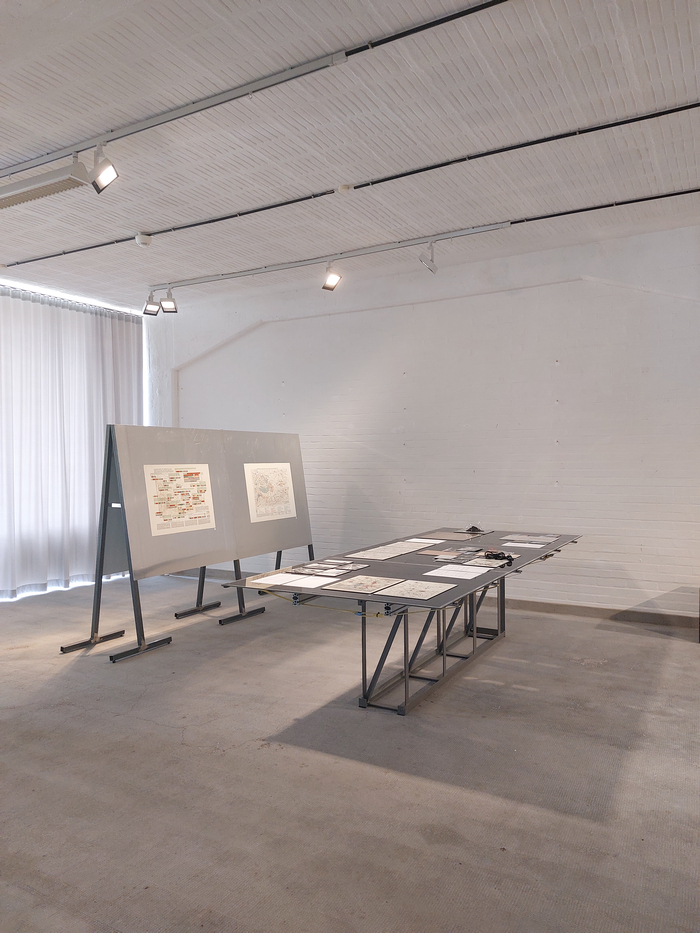
Electric lighting for commerce, home, science, work, education, et al that required the production of not just Lichtträgern, but light bulbs. A necessity of the developments of 1920s and 30s discussed in the chapter Factory via not only examples of the myriad forms of bulbs that were realised in the course of the 1920s as a component of the experimenting and feeling your way forward with the novel technology, but also the move towards standardisation and industrialisation in the production of light bulbs that was a necessary component of meeting the rapidly growing demand of the brave new worlds; aspects in which, as After modern brightness notes, Osram were a key protagonist.
Told you we'd come back to Osram.
An Osram who were also a partner in the so-called Phoebus cartel of light-bulb manufacturers, a group established in 1924 who not only divvied the global light bulb market up amongst themselves, but who through targeted research, skilled engineering and strict control limited the lifespan of the novel lightbulbs of the 1920s to some 1000 hours. A deliberate reduction in the life span of light bulbs that stands as an early example of planned obsolescence, arguably the first example in the brave new electrified industrial world, one that is continually repeated by electric goods manufacturers today. And in the anti-social horror of permanently installed LEDs gratefully repeated by lighting manufacturers of today.
Thus a deliberate reduction in the life span of light bulbs that is both a reminder that planned obsolescence isn't a new number by industry to extract a disproportionate profit from a society hopelessly dependent on them, but that also reminds of King Camp Gillette's 1904 disposable razor blade, and the 19th century crown bottle caps that served as the inspiration, and the position inherent therein that if you want to earn money you should invent something that people use then throw away. Or that you force them to throw away through ensuring it becomes useless with time. Or put another, marginally more cynical, way, reminds of the Capitalist adage: "sell a man a fish and you feed him for a day, teach a man to fish and you destroy your business model". And which is why we all need to teach ourselves to fish.
Electric lighting for commerce, home, science, work, education, et al that also required the Mines and Power Plants of After modern brightness' final two chapters.
The later reflected on in the final chapter in context of the development and expansion of the electric grid in the area around Dessau in the 1920s and 30s, including the mediation of a strong implication that Dessau only joined that grid in the early 1920s, thus just before Bauhaus' enforced move; the former in After modern brightness' penultimate chapter. A chapter that not only discusses the various open-cast mines that once, surrounded, and so positively and negatively impacted on the region around, Dessau, a subject that was one of the foci of the 2021 Bauhaus Lab Vegetation Under Power – Heat, Breath, Growth, but a chapter that is also the most delicious play on the English pronoun 'mine' and the German pronoun 'mein'. Thus both a 'mine' as being a principle source of power for electricity, and a 'mine', and a 'mein', as a principle reason for the need for so much electricity: our id as reflected through our ego. Individual and collective. Mines because we demand mine/mein. And industry is only too happy to profit from that demand. (And to actively fuel it.)
Thoughts to reflect upon in context of the undated, but probably after 1945, text Wie weit triebt Du es Mensch?, How far Are you Pushing it Humans?, by (in all probability) Marianne Brandt whose opening page is tantalisingly presented in context of Mine; tantalisingly, because its not the full text, just the first page. And in which Brandt, if it is her, discusses the 'large experiment' human society has undertaken in context of chemistry and technology in the past 150 years, an experimentation that has shaken 'the entire basis of our existence" and called forth a new era defined by 'hardships and natural disasters' which we 'accept as fate'. 'But', she asks, "wieviel davon ist Schicksal und wieviel ist eine Folge diese umsttützlerischen Versuches des Menschen mit seiner Umwelt und mit sich selbst?", 'How much of this is fate and how much is a consequence of this subversive experiment of man with his environment and with himself?' 'Can humanity be permanently immune to the transformations it has itself brought about through technology?' 'What will be in 100 years?'3
A text that if it is by Brandt, much as if the the self-confident, self-evident young woman in the photo that greets one to After modern brightness is Brandt, stands as a clear reminder that for all Marianne Brandt today is reduced to lamps, and teapots, she is, and always was, an awful lot more.
And urgently needs to be rediscovered as that more.
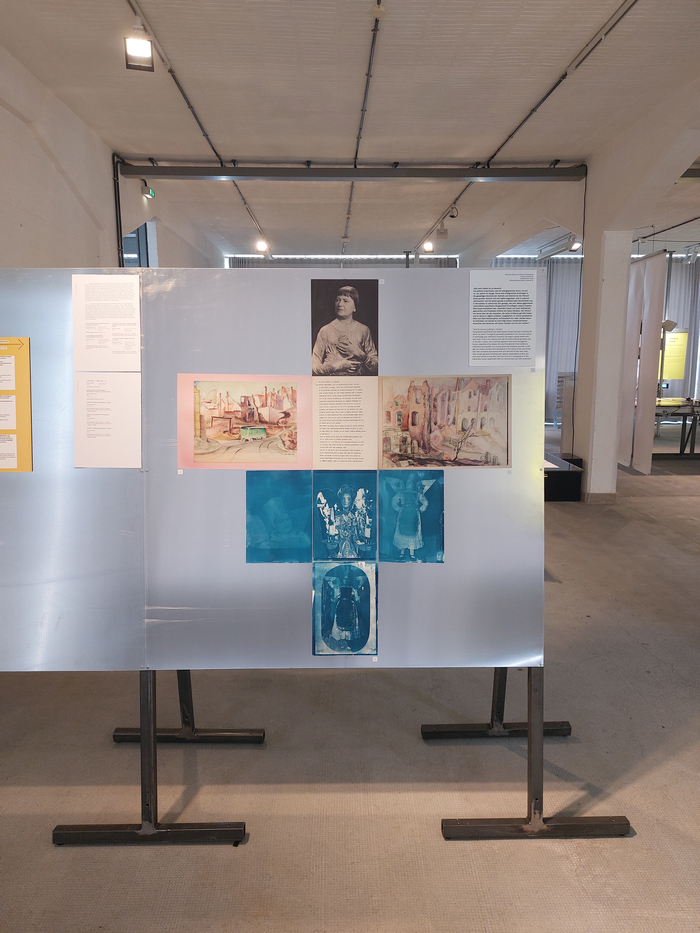
A readily accessible and neatly paced bilingual presentation After modern brightness approaches its varied and various subjects and positions via an array of photos, objects, archive documents and videos, including one in which Marianne Brandt herself comes, when all to briefly, to word. A brief, and all to rare, experience to be unhurriedly enjoyed in context of a sadly undated film, but which, on account of the fact it is discussing an exhibition featuring Brandt staged in the Galerie am Sachsenplatz, Leipzig, can (in all probability) be fairly accurately dated as October/November 1977, and in which Brandt sadly doesn't discuss lighting, or Wie weit triebt Du es Mensch? but rather expresses her disbelief, one could argue acute embarrassment, that anyone would be, that anyone is, interested in her collages. Marianne!! Genuinely!!
A presentation that in addition to the functionally, academically, collected and studied photos, objects, archive documents, videos et al also features abstract, artistic works by the 2025 Bauhaus Laboratorians, including, for example, Miami and New York based architect Lily Chishan Wong's fruit battery powered, LED morse code machine that announced the exhibition opening from the atelier building via light, both a neat play on the Dessau atelier building as a transparent light emitting mediator and reminder that while mines/meins still exist we no longer need mines for electricity, but still rely heavily on them; Halle based artist and designer Valena Ammon'sft video Halle to Dessau, the most gloriously mesmerising documentation of the electrification of the region via the conduit of train travel; or (potentially) Paris based Dominik Hoehn's life-cycle analysis of the the ME 94, its light bulbs and its electricity in contexts of, for example, design, manufacturing and end of life realities, the latter including an awful lot of disposed waste and a bare minimum of recycling. An important thought when one reflects on the advances of the 1920s.
Thus a presentation that in being such allows After modern brightness to not only exist as a space for concentrated and focussed reflections on the importance of the development of electric light for the development of not just the 1920s and 30s society in which the Bauhauses existed, sought to respond to, to find ways forward from, but also for the importance of those developments for our 21st century contemporary society, and the fundamental differences between then and now; allows for the sketching of a bridge that enables a differentiated perspective on the myriad links between the Bauhauses and us all.
A presentation that also allows access to consideration on the reality that for all electrification and electric lighting has brought untold benefits to human society, it has also brought untold problems and novel challenges for not only human society but the natural world we co-exist with and rely on, that need to be met. That truth the progress is never just an answer, but is also a question, and thus of the importance of being openly and honestly aware of the problems we are causing while embracing the novel.
That thing we only rarely do. An ongoing failure, inability, to learn from paste experience, which forces one to question the brightness of the human species.
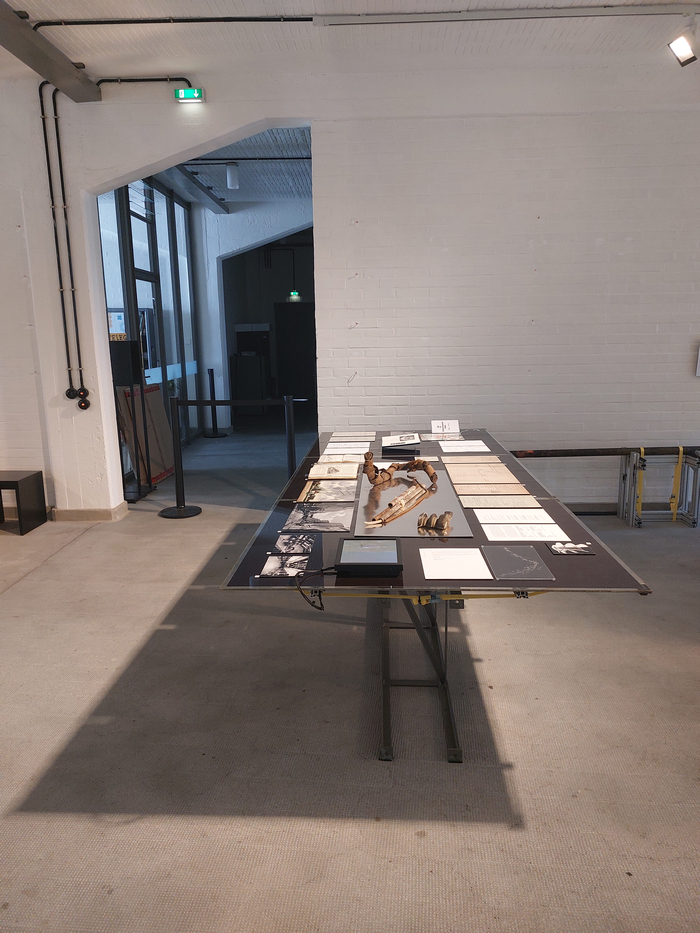
And a presentation initiated by deliberations on and responses to a Lichtträger developed in the 1920s at Bauhaus Dessau that, invariably, introduces Leipzig based Kandem, a.k.a. Körting & Mathiesen, that not only so fundamentally important lighting and lamp manufacturer of the first third of the 20th century, so fundamentally important developer of lighting and lamp technology in the third of the 20th century, until their role in illuminating not just the NSDAP's monstrous, and monstrous, rallies but the wider Nazi war machine, saw their factories acquired by, and shipped to, Russia as reparations after the 1939-45 War, but also that so important Bauhaus partner. One of only very few industrial partners with whom the Bauhauses successfully, financially and creatively successfully, cooperated. And a successful cooperation very much led by a Marriane Brandt. And by a Hin Bredendieck and a Heinrich Siegfried Bormann, two other, of a great many, all too often overlooked Bauhäusler.
A Hin Bredendieck, a Heinrich Siegfried Bormann, and a Kandem, who are also components of the alternative take on the reality of the Bauhauses and the (hi)story of the Bauhauses After modern brightness offers access to.
Whereby, that said, given the speed most visitors flew through After modern brightness when we were there the question as to how may visitors to Bauhaus Dessau are looking for, interested in, an alternative Bauhaus (hi)story is one that very much demands to be posed. A speed of viewing that tends to support the suspicions raised in context of Mehr als echt (More than real) by Jun Yang and by Kang Sunkoo – Sacristy that most visitors to Bauhaus Dessau are there to have their expectations confirmed, to pay due homage at Gropius's high cathedral. That one can learn in a school building apparently not occurring to the greater majority of visitors.
Or put another way, and staying in context of After modern brightness, whereas when the Bauhaus Dessau atelier building existed as an elucidation and explanation of the novel architecture of the day, when it stood in Dessau as a transparent box illuminated like a lamp — think of those famed curtain walls illuminating the 1920s night sky with the yellowish glow of the light bulbs of yore — it was a place of questioning, challenging, experimenting, succeeding, failing, trying again regardless if you won or loss, a place of adventure, a place where a Xanti Schawinsky danced Charlestons on the roof, a place where physical and metaphysical lights went on, and where the interiors of architecture and relationships and society were revealed thereby allowing their detailed analysis, today that same transparent glass box is for a great many a dark room in which identical images of a perceived, blithely, unquestioningly accepted Bauhaus are mechanically, unthinkingly reproduced over and over and over and over again.
Which isn't Stiftung Bauhaus Dessau's fault, or at least no the contemporary Stiftung Bauhaus Dessau's fault, look at their (as of summer 2025) current programme. Rather is a reality indicative of a society that believes not only that design is something static to be consumed, but believes that the Bauhauses are something static to be consumed, not the approach to problems, the approach to formulating questions, initiators of a 'chain of considerations that can lead to problem solutions or point the way to analysis', they could, should, must be appreciated as.
In which context, after visiting After modern brightness, and the rest of the showcases currently on offer in the Dessau atelier building, you must make the short trip across downtown Dessau to the Bauhaus Museum Dessau where you can not only delve deeper into the Bauhauses but can experience the ME 94 as the illuminated lamp you can't experience it as in After modern brightness. Can experience it as the modern brightness you can't experience it as in After modern brightness.
Albeit an illumined ME 94 in a vitrine not a room situation ¯\_(ツ)_/¯ An orange vitrine that denies the emitted light the chance to elucidate the shade's function through reflecting with exaggerated agency from the roof ¯\_(ツ)_/¯
And an ME 94 displayed alongside a host of other lamp design by Marianne Brandt, often together with Hin Bredendieck, that help elucidate just how large Brandt's canon is: that for all she is unfairly reduced to lamps, she was without question a skilled, insightful and highly creative lamp designer. Lamps by Brandt that stand in orange painted vitrines alongside numerous other lamp design by Bauhäusler such Alfred Schäfter, Friedrich Eingmann or Wilhelm Wagenfeld, the latter represented, yes, by that lamp. A lamp popularly known as The Bauhaus Lamp but which as one learns in the Bauhaus Museum Dessau is A Bauhaus Lamp.
An important difference.
As the Bauhaus lamp it is definitive for the Bauhauses, defines the Bauhauses as a juxtaposing of basic geometric forms, as a geometric reduction, as a repeatable style; confirms the Bauhauses as a thousand lazily xeroxed coffee table books, and expensive location marketing initiatives, selfishly tell the unthinking it it is.
As a Bauhaus lamp it stands as one of innumerate responses to the varied positions at not just the Bauhauses in the course of the 1920s in context of contemporary realities and contemporary and future challenges, but of the myriad avant-garde schools and movements of the 1920s.
As a Bauhaus lamp it stands not only as one of 'a variety of Lichtträgern that alternated throughout the building according to functional needs', but that alternated according to conceptual positions.
Stands as a reminder that any epoch is the discourse between differing positions from which paths forward develop. And thus the dangers for our society of reducing society past to definitives. And the dangers for our society of reducing society present to definitives as represented by the positions of those who shout loudest, rather than listening to all voices.
A reminder reinforced by the oft overlooked and ignored ME 94.
By the oft overlooked and ignored Marianne Brandt.
And by a 2025 Bauhaus Lab whose deliberations on and responses to the questions stimulated by the ME 94 provide you with ample non-linear directions in which to re-approach not only Bauhaus lamps, Bauhaus lighting, the Bauhauses and Marianne Brandt, but to re-approach the brightness of Modernism then and now and as popularly accepted, employed, today.
And thereby to enable access to the more probable (hi)story of not just the Bauhauses but of Functional Modernism we all urgently need.
After modern brightness. Ecologies of light, is scheduled to run at Stiftung Bauhaus Dessau, Bauhausgebäude, Gropiusallee 38, 06846 Dessau-Roßlau until Sunday March 1st.
Full details can be found at https://bauhaus-dessau.de
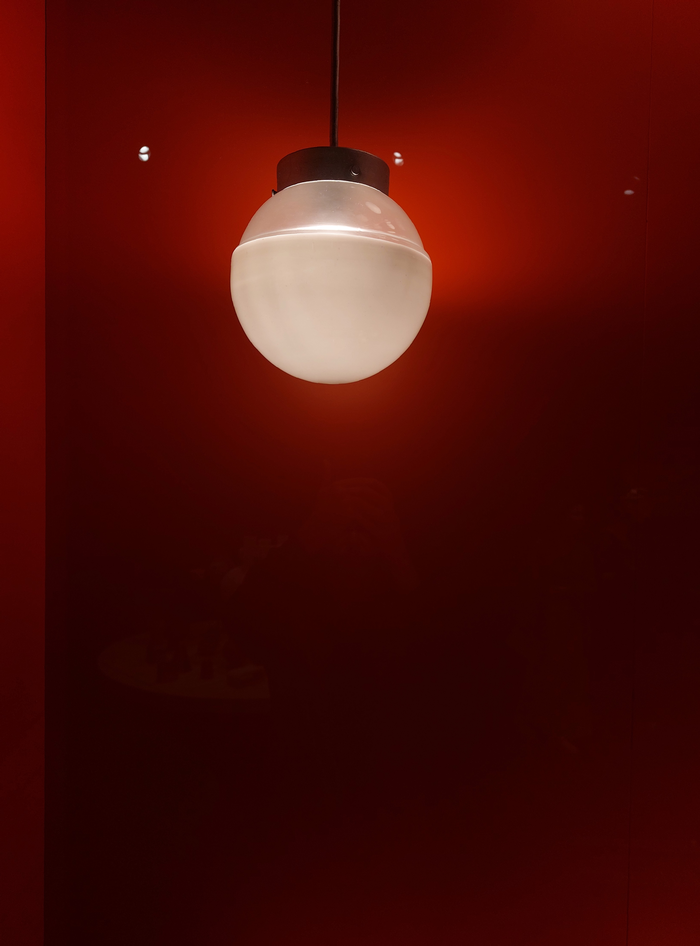
1Max Bill, Die Kugel-Pendelleuchte, Form+Zweck, Nr 3, 1979 page 71 Available via https://digital.slub-dresden.de/werkansicht?tx_dlf%5Bid%5D=131324&tx_dlf%5Bpage%5D=73 as ever at this point a million thanks to the wondrous people at SLUB Dresden for digitalising Form+Zweck.
2For reasons to banal to name we currently don't have access to our Charles Eames quote book and so don't quote directly here because we can't reference it, which is of critical importance. But he did say such. We will update.
3Wie weit triebt Du es Mensch?, in all probability by Marianne Brandt as presented in After modern brightness. Ecologies of light, (Stiftung Bauhaus Dessau I54524/1-3)